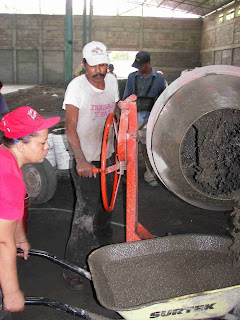 photos from around the world.
photos from around the world.As Eric explains, “There is so much beauty, courage, and hope in this world, yet also so much pain, struggle, and need. I can't really pretend that photos ever come close to capturing this. But, I do believe that they can remind us of communities outside of our own, and our strange common bond with those whom we don't know, and will never meet.”
After his year with us, Eric and Molly spent 2008 traveling arou nd the world and volunteering with different organizations. Peace Photography supports those non-profits (including the CDCA) through online sales of prints, notecards and calendars. Each individual photo is linked to a specific non-profit (eg. When someone buys a photo of
nd the world and volunteering with different organizations. Peace Photography supports those non-profits (including the CDCA) through online sales of prints, notecards and calendars. Each individual photo is linked to a specific non-profit (eg. When someone buys a photo of
Their photos are truly moving and speak of our common humanity and the power of photography to connect us to one another. “Many of our leaders have decided for us that the best choice is to live in fear of those ‘others,’” says Eric, “that it is somehow best to keep ‘them’ on the opposite side of walls, razor wire, gun barrels, and bombs. I do not agree. I believe that we do have other choices. Better choices.” Peace Photography helps to remind us what those choices are. Please check out this very cool project.
to one another. “Many of our leaders have decided for us that the best choice is to live in fear of those ‘others,’” says Eric, “that it is somehow best to keep ‘them’ on the opposite side of walls, razor wire, gun barrels, and bombs. I do not agree. I believe that we do have other choices. Better choices.” Peace Photography helps to remind us what those choices are. Please check out this very cool project.
You can see a gorgeous slide show of Around the World in 365 Days at: http://www.peacephotography.org/search/label/slideshows
To see photos of
For pictures of
For incredible Nature photos see:
http://www.peacephotography.org/search/label/nature
Eric and Molly hope to expand Peace Photography to include the work of other photographers in the near future. If you are interested, you can write to: eric@peacephotography.org










